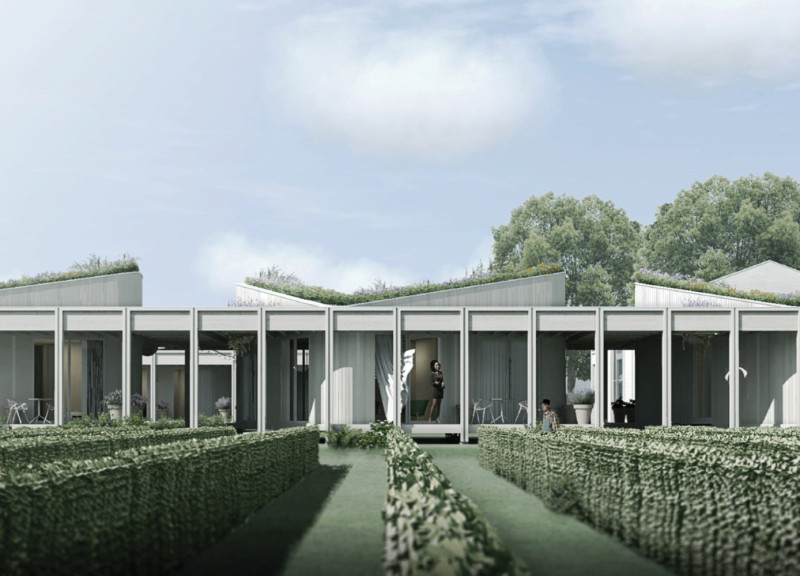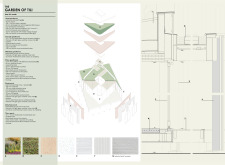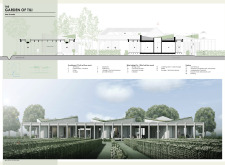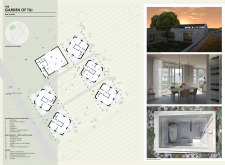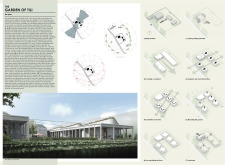5 key facts about this project
At its core, the Garden of Tili represents a harmonious relationship between architecture and nature. The design strategy emphasizes the natural topography of the site, allowing the built environment to blend seamlessly with the surrounding landscape. By prioritizing sustainability, the project utilizes recycled materials, energy-efficient systems, and native landscaping in its overall development, showing respect for the local context while addressing contemporary architectural challenges.
The structure consists of multiple components, including guesthouses and a wine tasting facility, strategically arranged to foster a sense of community and connection to the environment. Each guesthouse is thoughtfully designed with ample communal areas, kitchens, and lounges that facilitate engagement among users. Large windows and open layouts are employed to create a dialogue between indoor and outdoor spaces, highlighting the stunning natural surroundings and allowing for plentiful natural light.
The wine tasting facility features a larger footprint, accommodating not only tasting experiences but also events, dining, and social gatherings. The architectural layout invites a seamless flow of movement between the interior spaces and the landscaped outdoor areas, encouraging guests to explore their surroundings and immerse themselves in the local culture. The design pays attention to detail, ensuring that each area is functional while maintaining a sense of comfort and aesthetic appeal.
Unique design approaches differentiate the Garden of Tili from other architectural projects. The use of cross-laminated timber as a primary construction material not only highlights sustainability but also offers advantages such as enhanced structural integrity and aesthetic warmth. The roofing design is particularly notable; featuring sloped forms that facilitate rainwater harvesting, it integrates ecological functionality with visual interest. This innovative approach to roofing not only supports the project's sustainability goals but also contributes to a distinct architectural identity.
Landscaping plays a vital role in the overall experience of the Garden of Tili. Thoughtful planting of indigenous species reinforces the connection to local ecology, while strategically placed pathways invite exploration and interaction. The site's layout promotes natural ventilation and active community engagement through courtyards that serve as social gathering points, reinforcing the project's commitment to fostering community connections.
Overall, the Garden of Tili stands as an example of how architecture can enhance the experience of its users while maintaining a strong connection to the surrounding environment and cultural context. It combines functionality with thoughtful design, illustrating the potential for architecture to support both individual and communal needs harmoniously. For a deeper understanding of this project, including architectural plans, sections, designs, and ideas, readers are encouraged to explore the detailed project presentation. Engaging with these elements can provide valuable insights into the architectural approach and the intricate considerations that went into creating this significant space.


